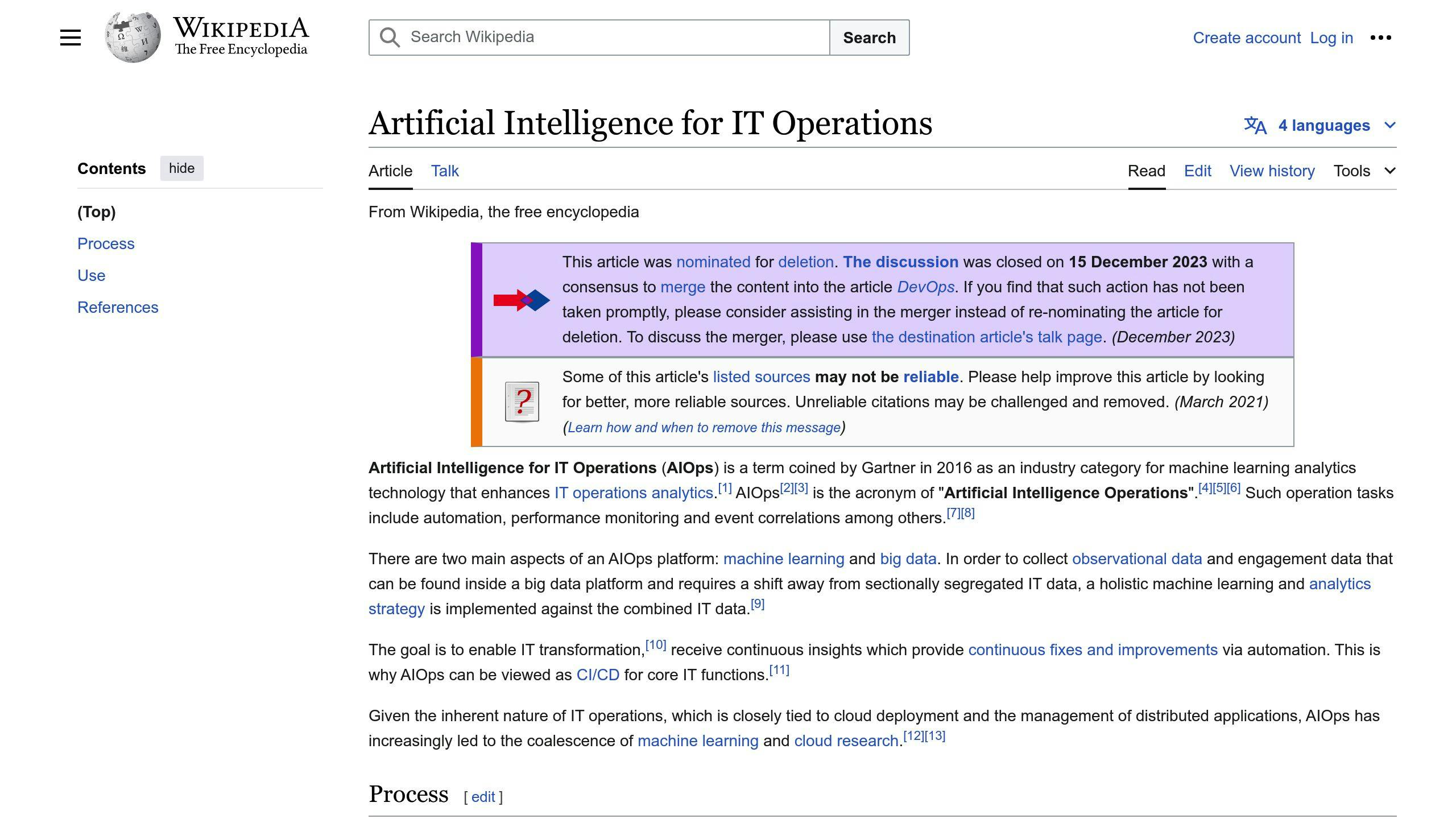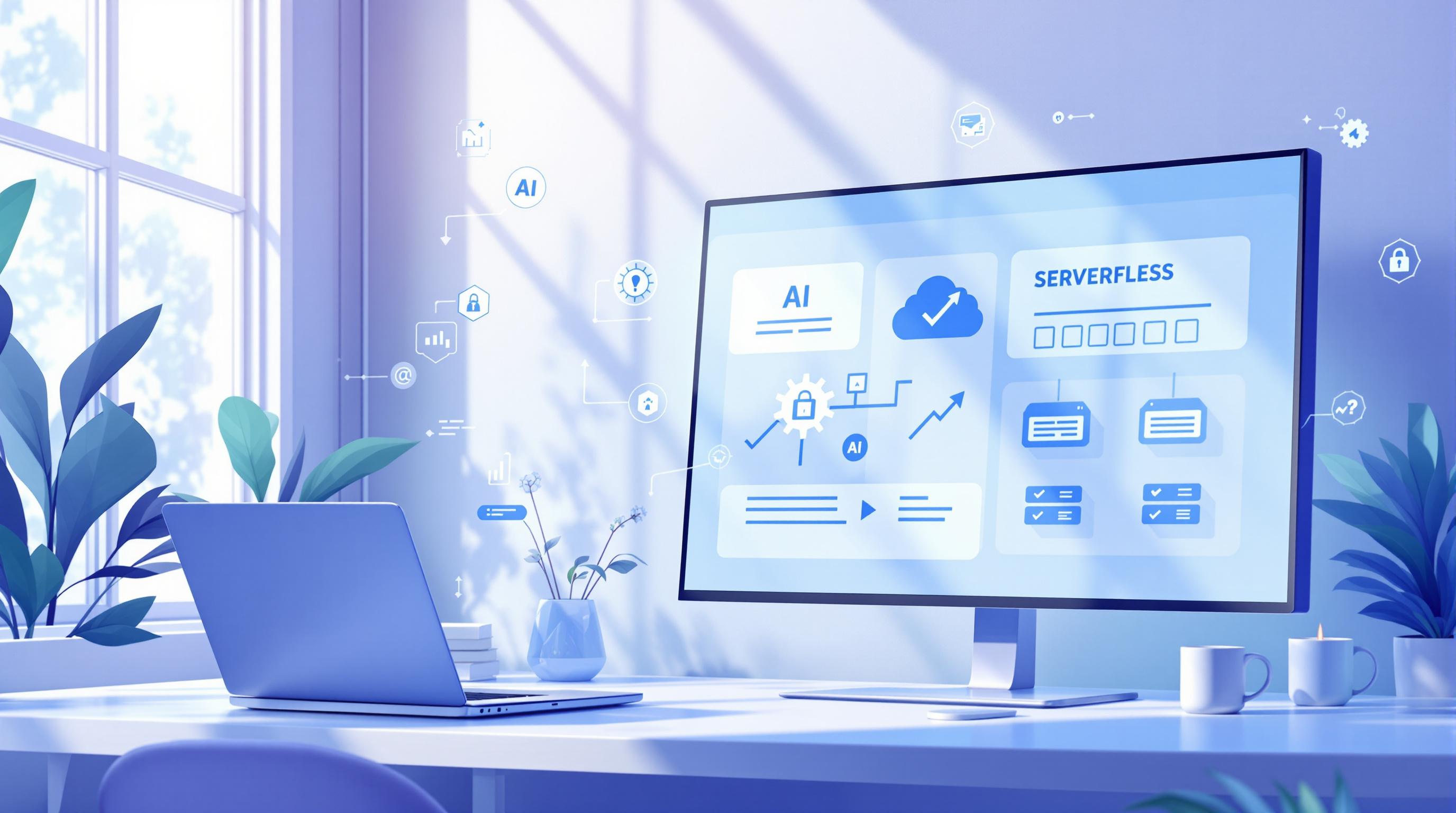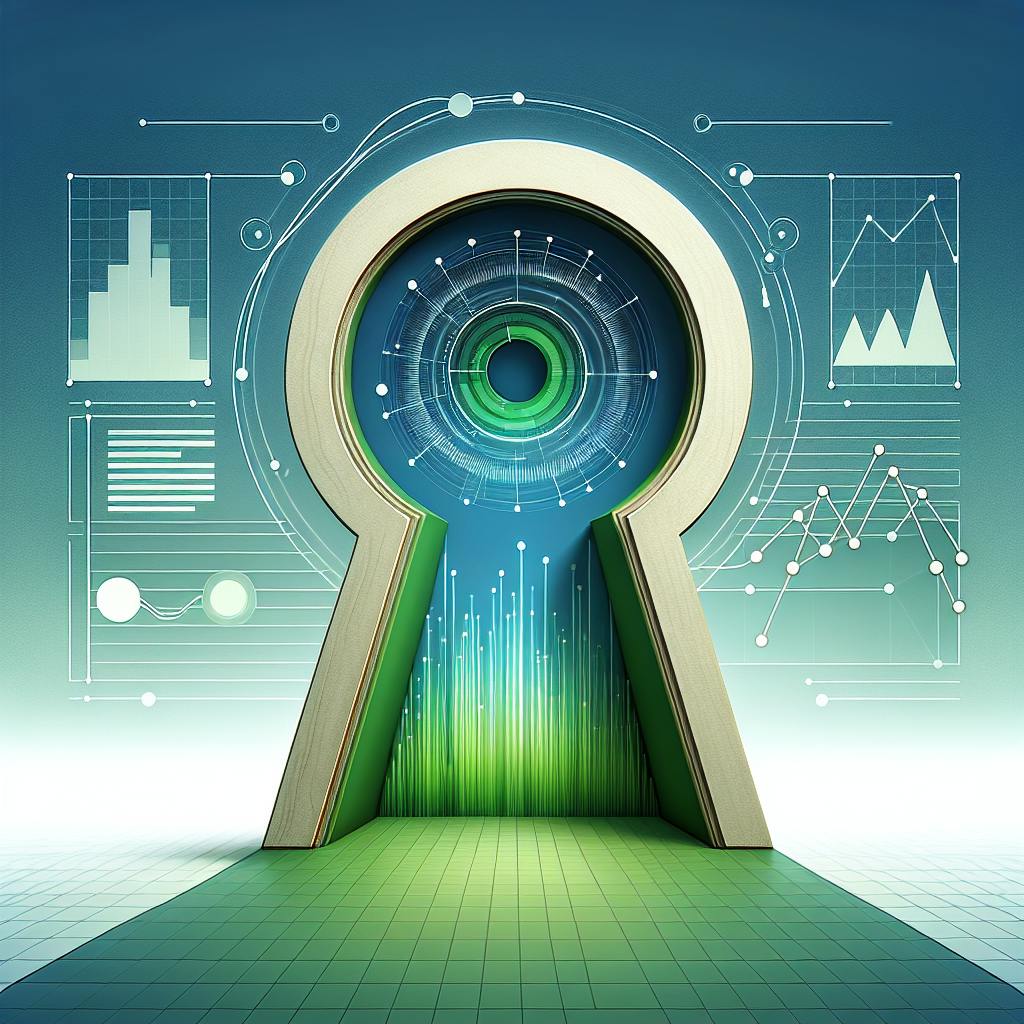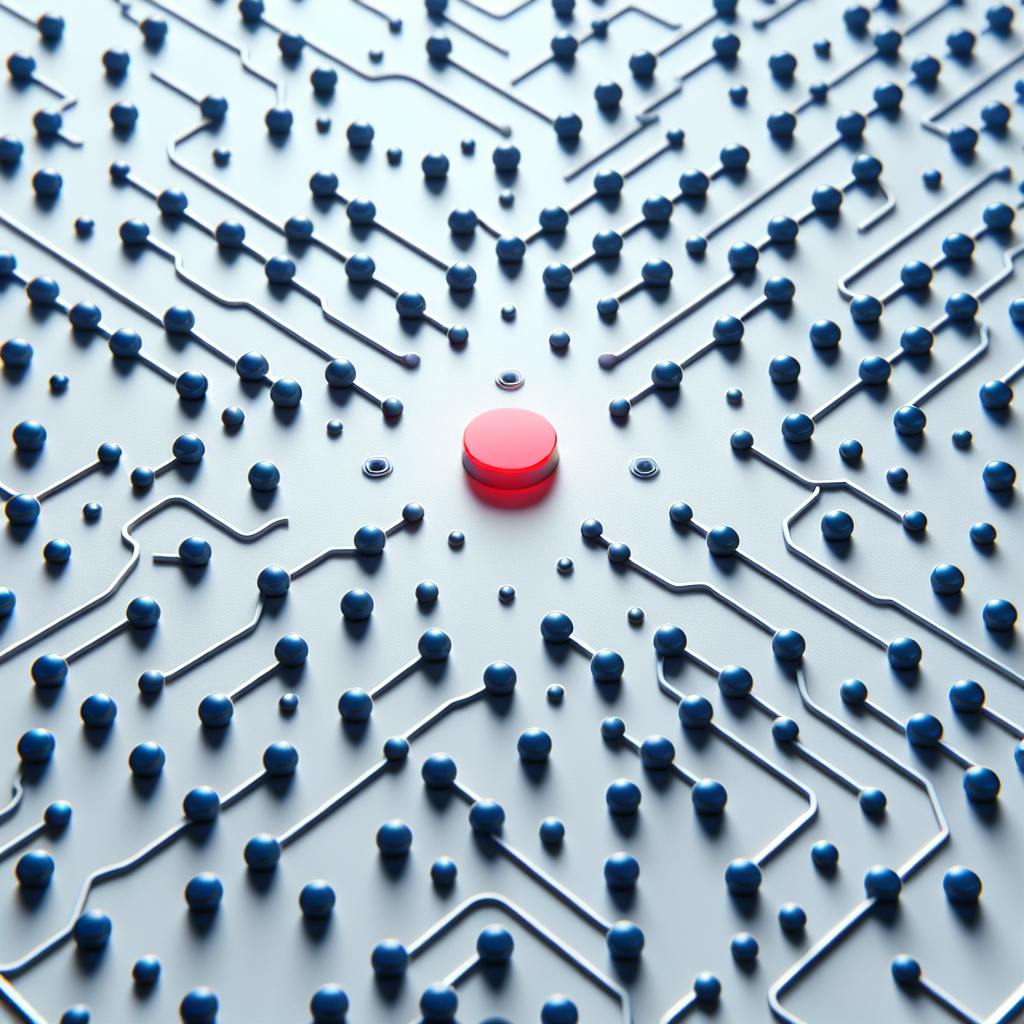AI observability platforms help teams monitor and understand AI systems in real-time. Here's what you need to know:
- Definition: Tools that track AI model performance, behavior, and decision-making
- Purpose: Improve reliability, transparency, and trust in AI systems
- Key components: Metrics, logs, traces, and events
Key benefits:
- Catch and fix issues quickly
- Understand root causes of problems
- Build more responsible AI models
Main features:
- Live monitoring and alerts
- Root cause analysis
- Performance optimization tools
- Anomaly detection
| Aspect | Standard Monitoring | AI Observability |
|---|---|---|
| Focus | What happened | How and why it happened |
| Depth | Surface-level | Root causes |
| Insights | Basic metrics | Detailed model behavior |
| Action | Reactive alerts | Proactive prevention |
Choosing a platform:
- Look for event tracking, model state checking, and debugging features
- Ensure compatibility with existing systems
- Consider scalability and customization options
Challenges:
- Handling large, complex datasets
- Ensuring data security
- Interpreting AI decision-making
As AI systems grow more complex, effective observability becomes crucial for building trustworthy and responsible AI.
Related video from YouTube
2. Main Parts of AI Observability Platforms
AI observability platforms have four key parts that work together to monitor AI systems. These parts help teams build AI that works well and can be trusted.
2.1 Metrics
Metrics are numbers that show how well an AI system is working. They help teams:
- See how the system changes over time
- Find unusual patterns
- Spot areas to make better
Metrics come from different parts of the system, like apps and servers. They help teams understand if the AI is healthy and working right.
2.2 Logs
Logs are detailed records of what happens in an AI system. They show:
- Errors
- Warnings
- Other important events
Logs help teams:
- Fix problems
- Find out why issues happen
- Make the system work better
Using a clear format like JSON for logs is helpful, especially in complex systems.
2.3 Traces
Traces show how a user's request moves through the AI system. They help teams:
- See where slowdowns happen
- Understand how different parts of the system work together
- Find and fix performance issues
Traces are key to seeing how AI systems connect with each other and other parts.
2.4 Events
Events are alerts that happen when something specific occurs in an AI system. They help teams:
- Spot problems quickly
- See trends
- Respond to issues right away
Events are important for watching the system closely and fixing problems fast.
| Component | What it Does | Why it's Important |
|---|---|---|
| Metrics | Measure system performance | Show trends and unusual patterns |
| Logs | Record detailed system events | Help fix and prevent problems |
| Traces | Track user requests through the system | Find performance issues |
| Events | Alert teams to specific conditions | Allow quick responses to problems |
3. Why AI Observability is Needed
3.1 Issues in Complex AI Systems
AI systems are getting more complex, which makes it hard to:
- Understand how they work
- See how well they perform
- Know how much resources they use
This complexity creates a "black box" effect. It becomes tough to:
- Find problems
- Spot odd behavior
- Keep the system under control
As a result, AI systems can become:
- Unreliable
- Unsafe
- Hard to understand
This leads to less trust in how AI makes decisions.
3.2 Benefits of AI Observability
AI observability helps solve these problems. It:
- Makes AI models easier to understand
- Helps find the root causes of issues
- Builds better and more responsible models
| Benefit | Description |
|---|---|
| Improved reliability | Catches and fixes issues quickly |
| Enhanced security | Spots potential risks early |
| Greater transparency | Shows how AI makes decisions |
| Increased trust | People understand AI better |
3.3 Real-World Uses
| Industry | How AI Observability Helps |
|---|---|
| Healthcare | Finds biases in diagnosis systems |
| Finance | Spots odd behavior in trading systems |
| Self-driving cars | Checks sensor data for safety |
4. Key Features of AI Observability Platforms
4.1 Live Monitoring and Alerts
AI observability platforms watch AI systems in real-time and send alerts when problems occur. This helps teams:
- Find and fix issues quickly
- Keep AI models working as expected
- Reduce downtime
- Fix problems faster
4.2 Finding the Main Cause of Issues
These platforms help teams find out why problems happen in AI systems. They can:
- Look closely at data
- Find the source of issues
- Fix problems at their root
- Stop issues from happening again
4.3 Tools to Improve Performance
AI observability platforms offer tools to make AI systems work better. These tools help teams:
- Check how well the system is working
- Make AI models faster
- Ensure data quality
| Tool | What it Does |
|---|---|
| Metrics monitoring | Tracks system performance |
| Model optimization | Makes AI models work faster |
| Data quality analysis | Checks if data is good |
4.4 Spotting and Predicting Unusual Behavior
These platforms can find odd behavior in AI systems before big problems happen. This helps teams:
- Catch issues early
- Keep systems running smoothly
- Take action before problems get worse
5. AI Observability Throughout the ML Process
AI observability is important at every step of machine learning (ML). It helps teams watch and understand AI systems from start to finish.
5.1 Development: Testing and Checking
During development, AI observability helps teams:
- Test models for errors
- Look for biases
- Check how well models work
This involves watching:
- Data quality
- Model performance
- Changes in data over time
Finding problems early saves time and money. It also makes sure models work well.
5.2 Deployment: Making Sure Everything Works
When putting AI models to use, observability is key. It helps:
- Watch how models work in real-time
- Check data quality
- Find odd behavior or errors
This lets teams fix issues quickly. It keeps models running smoothly.
5.3 Production: Keeping an Eye on Things
Once models are working, AI observability keeps them running well. Teams need to:
- Keep checking data quality
- Watch how models perform
- Look for changes in data
- Update and improve models regularly
By always watching and studying how models work, teams can make them better over time.
| Stage | What to Watch | Why It's Important |
|---|---|---|
| Development | Data quality, model performance, data changes | Catch problems early, save time and money |
| Deployment | Real-time performance, data quality, odd behavior | Fix issues quickly, keep models running |
| Production | Ongoing data and performance checks, regular updates | Keep models working well, make improvements |
sbb-itb-9890dba
6. How to Pick an AI Observability Platform
Choosing the right AI observability platform is key for watching AI systems well. Here's what to look for when picking one.
6.1 What to Look For
When choosing an AI observability platform, check for these features:
| Feature | What It Does |
|---|---|
| Event tracking | Watches and studies events that show problems or ways to make ML models better |
| Model state checking | Keeps an eye on how ML models are training, including how accurate they are and how much memory they use |
| Version tracking | Keeps track of different versions of ML algorithms and compares how well they work over time |
| Debugging help | Makes it easier to find and fix problems in models by looking at data in real-time |
| SLA checks | Automatically checks if data providers are meeting their promises to ML service users |
6.2 Working with Current Systems
Make sure the platform works well with what you already have:
- Data systems: Can it get data from all your sources?
- ML pipelines: Does it fit in with how you build and use ML models?
- System checking tools: Can it work with the tools you use to watch how your whole system is doing?
6.3 Ability to Grow and Change
Pick a platform that can keep up as your needs change:
| Feature | Why It's Important |
|---|---|
| Can handle more | Works well even as you get more data and complex models |
| Can be changed | Lets you set up your own alerts and dashboards |
| Works with different things | Supports many ML frameworks and model types |
7. Tips for Using AI Observability
7.1 Creating Good Monitoring Plans
To make a good monitoring plan for AI models:
1. Set clear goals 2. Pick key metrics that matter to your business 3. Focus on what's important
When making your plan:
- Decide what to watch
- Choose where to get data
- Set how often to check
- Make rules for alerts
- Keep improving your plan
7.2 Choosing the Right Measurements
Pick measurements that show how well your AI models work. Here are some key ones:
| Metric | What it Means |
|---|---|
| Model accuracy | How often the model gets things right |
| Model speed | How fast the model gives answers |
| Data quality | How good the data is for training and testing |
| Model changes | How the model's work changes over time |
When picking metrics, ask:
- Does it fit your goals?
- Can you measure it?
- Can you fix things based on it?
7.3 Setting Up Useful Alerts
Good alerts help you catch problems fast. Set them up to tell you when something's wrong, like when the model starts making more mistakes.
Tips for good alerts:
- Set clear rules for when to send alerts
- Make important alerts stand out
- Make sure alerts tell you how to fix the problem
- Keep checking and fixing your alert settings
8. Difficulties with AI Observability
AI observability comes with some challenges. Let's look at the main problems teams face when using it.
8.1 Dealing with Big, Complex Data
AI systems create a lot of complex data. This can be hard to:
- Collect
- Process
- Analyze
The data often comes from many places, making it even trickier.
To handle this:
- Use good data management
- Set up systems that can handle lots of data
- Use tools that find patterns in data
8.2 Keeping Data Safe
AI often uses sensitive information. Keeping this data safe is very important.
To protect data:
- Use strong security measures
- Encrypt data
- Control who can access it
- Follow data protection rules
8.3 Understanding How AI Makes Decisions
AI models can be hard to understand. It's not always clear why they make certain choices.
To help with this:
- Use tools that explain AI decisions
- Have experts who can read AI results
| Challenge | Problem | Solution |
|---|---|---|
| Big, complex data | Hard to handle and understand | Use good data management and analysis tools |
| Data safety | Sensitive info needs protection | Use strong security and follow data rules |
| Understanding AI decisions | AI choices can be unclear | Use tools to explain AI and have experts to help |
9. What's Next for AI Observability
AI observability is changing. Here's what to expect in the future:
9.1 Making AI Easier to Understand
AI models can be hard to figure out. People are working on ways to explain how AI makes choices. This will help:
- Find mistakes in AI thinking
- Spot unfair decisions
- Make AI more clear to everyone
9.2 Working with AIOps

AIOps uses AI to run IT systems. When combined with AI observability, it can:
- Find problems on its own
- Fix issues without human help
- Make systems run better
9.3 Seeing Problems Before They Happen
New AI observability tools will:
- Look at lots of data
- Spot patterns that might cause trouble
- Suggest ways to fix things early
This helps stop problems before they start.
| Feature | What It Does | Why It Matters |
|---|---|---|
| Explain AI | Shows how AI makes choices | Makes AI more trustworthy |
| Work with AIOps | Finds and fixes issues automatically | Keeps systems running smoothly |
| Predict Problems | Spots possible issues early | Stops problems before they start |
As AI gets more complex, good AI observability will become even more important. These new tools will help people use AI better and more safely.
10. Wrap-up: Using AI Observability to Improve AI Systems
AI observability helps teams watch and understand how AI systems work. It's key for building AI that people can trust and use safely. As AI gets more complex, watching it closely becomes even more important.
Here's why AI observability matters:
- Gives real-time info on how AI is working
- Helps keep AI fair and working well
- Makes AI cheaper to run
- Helps explain how AI makes choices
To use AI observability well:
- Set up alerts for problems
- Use tools to spot odd behavior
- Find ways to make AI work better
| Benefits of AI Observability | How It Helps |
|---|---|
| Real-time insights | Catch issues quickly |
| Better performance | Keep AI running smoothly |
| Cost savings | Use resources wisely |
| More trust | Explain AI decisions |



